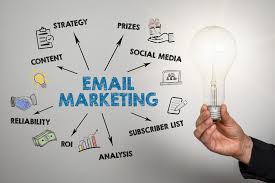


Email marketing is a digital marketing strategy that involves sending emails to a list of subscribers or potential customers with the goal of promoting products, services, or content. It’s a powerful tool for building relationships, driving sales, and keeping your audience engaged. Here’s a breakdown of how it works:
Key Components of Email Marketing
Building an Email List:
- Opt-in Forms: Collect email addresses through your website, landing pages, or social media using sign-up forms.
- Lead Magnets: Offer incentives like free e-books, discount codes, or exclusive content to encourage people to subscribe.
Segmenting Your Audience:
- Demographics: Group subscribers based on age, gender, location, etc.
- Behavior: Segment based on past purchases, engagement levels, or interests.
- Preferences: Use data on what kind of content subscribers prefer or how often they want to receive emails.
Creating Engaging Content:
- Personalization: Tailor your emails to the recipient’s interests or past interactions.
- Design: Use visually appealing templates that are mobile-friendly.
- Copywriting: Craft compelling subject lines and body content that encourages action.
Automating Emails:
- Welcome Series: Send a series of introductory emails to new subscribers.
- Drip Campaigns: Set up automated sequences based on user behavior or milestones.
- Abandoned Cart Emails: Remind users of items left in their cart to encourage completion of the purchase.
Analyzing Performance:
- Open Rates: Measure the percentage of recipients who open your emails.
- Click-Through Rates (CTR): Track how many people click on links within your emails.
- Conversion Rates: Evaluate how many email recipients complete a desired action, like making a purchase.
- Unsubscribe Rates: Monitor how many people opt out of your email list.
Compliance and Best Practices:
- CAN-SPAM Act: Ensure compliance with laws requiring opt-out options and accurate sender information.
- GDPR: Follow regulations for data protection and privacy if you’re operating in or with the European Union.
Benefits of Email Marketing
- Direct Communication: Reach your audience directly in their inbox.
- Cost-Effective: Compared to other marketing channels, email marketing is relatively inexpensive.
- Measurable Results: Track and analyze the performance of your campaigns to see what works and what doesn’t.
- Personalization: Tailor your messages to individual subscriber preferences and behaviors.
Email marketing remains one of the most effective ways to engage with your audience, drive sales, and build long-term customer relationshi
